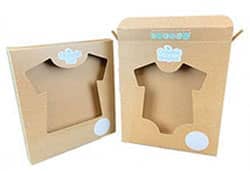Small Cardboard Packaging Boxes

Whether it is packing for a move or products you will be shipping out to customers, many people often consider small boxes and packaging to be a minor issue. In reality, there should be as much concern when packing a small box as when packing a large one. Especially if you consider that the contents can often be fragile and heavy. Here are some tips to adhere to when packing small cardboard packaging boxes to avoid the risk of damage while in transit.
Use for Heavy Items
Small but heavy items should ideally be packed individually, especially if they are unique. Having them in larger boxes may cause them to rattle around and damage the other less heavy contents. Where possible, pack like items together. For instance, pack items such as books and kitchen utensils on their own.
Set an Adequate Limit
Small boxes should not be too heavy. This may compromise the integrity of the box and cause items to fall out. It can also make carrying them around without machinery very difficult. No more than about 50 pounds should be sufficient. Make use of a weighing machine to ensure you do not go over this limit. If you do, consider splitting the contents of the box into even smaller boxes with filler materials or inserts to keep the contents stable.
No Over Stuffing
Choose boxes and packaging size that is appropriate to the contents. Do not allow the contents to overflow, forcing you to use extra packing material to hold the contents within. When you use packing materials like tape, it should be just to seal the box, not keep the contents confined within because they want to burst out. You would rather use a larger box and add filler materials like newspaper or packing peanuts to stabilize the contents.
Stack According to Weight
Even though it may seem like smaller boxes should be on top, use weight as a guide. The heavier the box, despite its size, the lower it should go. Too heavy a box on top may damage those below and the contents they hold. This kind of stacking also increases the risk of toppling when in transit. These boxes should preferably be placed on a level surface and not on upholstered furniture like sofas. Heavy boxes rubbing against fabric can cause it to tear. The same applies to placing them on fine wood surfaces that can easily be tarnished.

